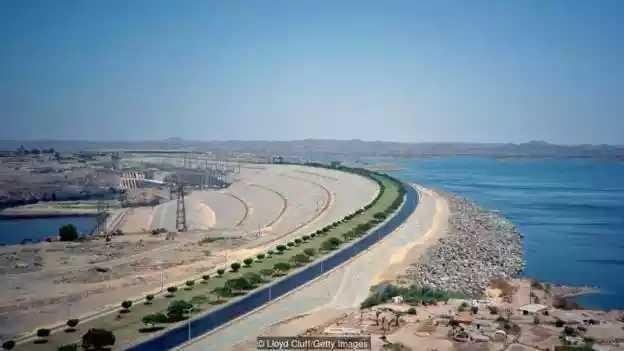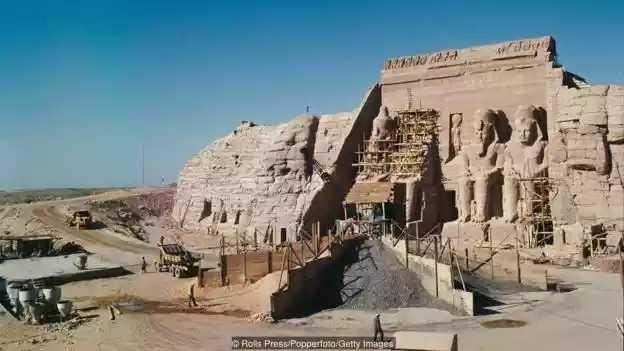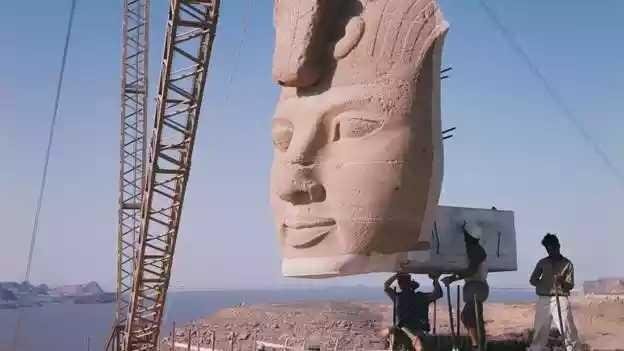Egypt's exquisite temples that had to be moved
If Abu Simbel had not been saved, places like Vienna's Historic Centre, Cambodia's Angkor Wat and other Unesco World Heritage sites might only live on in history books.
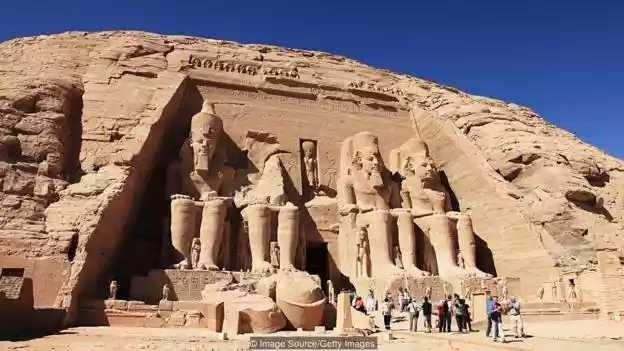
Deep within the interior of the Great Temple at Abu Simbel, carved into a mountainside in southern Egypt's ancient Nubian Valley, lies a vast, wondrous world. Pillars adorned with intricate military artworks support a ceiling painted with winged vultures. Floor-to-ceiling hieroglyphics depicting the victorious battles of Pharaoh Ramses II, the same man responsible for constructing this enormous temple, decorate the walls. Outside, four colossal statues of the pharaoh face east toward the rising sun, looking out over a crystal-clear lake.
It’s an incredible sight to behold, but one that if history had gone just a little bit differently, would not be here today. Instead, this temple would be under the lake’s waters. What’s even harder to imagine, if Abu Simbel had not been saved, places like Vienna's Historic Centre, Cambodia's Angkor Wat and other Unesco World Heritage sites might only live on in history books.
“Egypt has done a great job preserving their ancient temples,” said Kim Keating, director of global sales for luxury adventure tour company Geographic Expeditions. “And this [complex] – with soft lighting highlighting its interior artworks; graffiti that dates back to early invaders, documenting how Egypt was conquered over time; and its location in front of a beautiful lake so large it’s like peering out on to the ocean – is magnificent.”
An immense preservation effort saved the temples of Abu Simbel from a watery fate (Credit: frans lemmens/Alamy)
You may also be interested in:
• A silent city hidden in the desert
• The tiny town built from Roman ruins
• A 30,000km road to a lost world
North Africa's Nubian Valley straddles the border of southern Egypt and northern Sudan, a remote desert region dotted with palm-fringed oases and occasional wadis (seasonal rivers) that is home to the mighty Nile River, which winds its way past the Egyptian city of Aswan towards Cairo. In ancient days, this was a land of gold and riches, and one ruled by kings – many of whom built pyramids, monuments and temples, in part as a show of power. The Abu Simbel complex, built over the course of 20 years in the 13th Century BC, is one of the most impressive still standing today. Alongside the larger Great Temple stands a smaller temple that honours Ramses' queen, Nefertari.
It's all done so perfectly
Keating was in awe when she saw the temples for the first time. But she was even more amazed to find out that in the early 1960s, a team of international engineers disassembled and then carefully moved – piece by piece – each of them. They then reassembled the temples more than 60m above their original location to save the complex from the Nile’s rising waters. That 5,250-sq-km lake that Keating described is Lake Nasser, a reservoir that formed when the valley flooded. Just more than 50 years ago, it didn't even exist.
“It's all done so perfectly,” she said. “It's impossible to tell, even when you (like me) really try.”
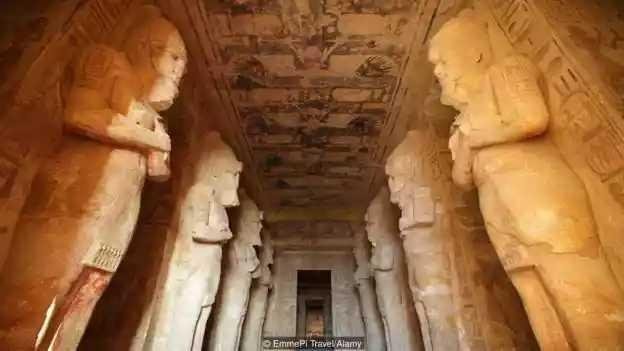
The Great Temple, built by Pharaoh Ramses II, features floor-to-ceiling hieroglyphics (Credit: EmmePi Travel/Alamy)
Unesco’s ‘Nubia Campaign’ came about in 1960, when the United Arab Republic (a political union of Egypt and Syria that existed between 1958 and 1961) began construction on a new dam along the Nile River, just outside of Aswan. While the dam would improve irrigation throughout the valley as well as significantly increase Egypt's hydroelectric output, in a few years the swelling waters would also completely submerge Abu Simbel's exquisite temples.
In an effort to prevent the temples’ destruction, Unesco embarked on its first-ever collaborative international rescue effort (the organisation initially formed in 1945 to promote
